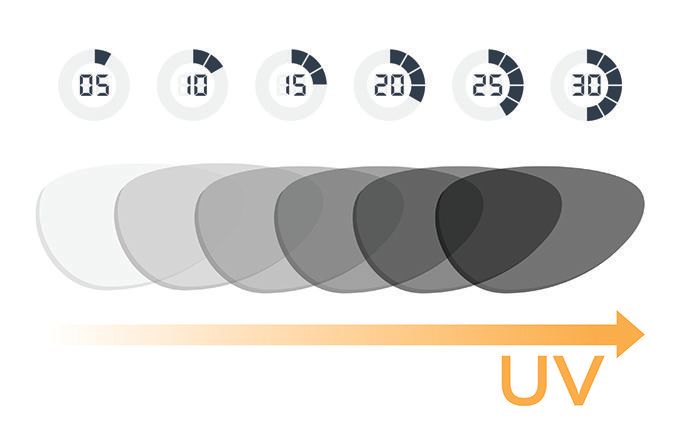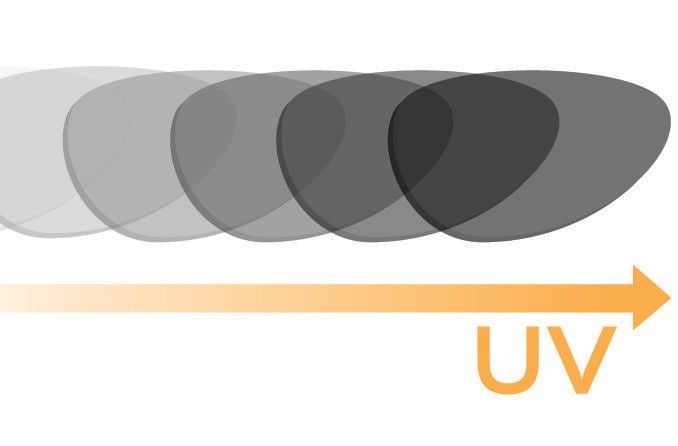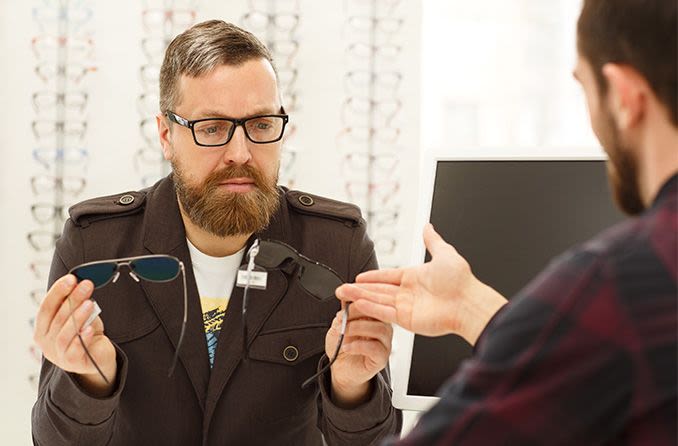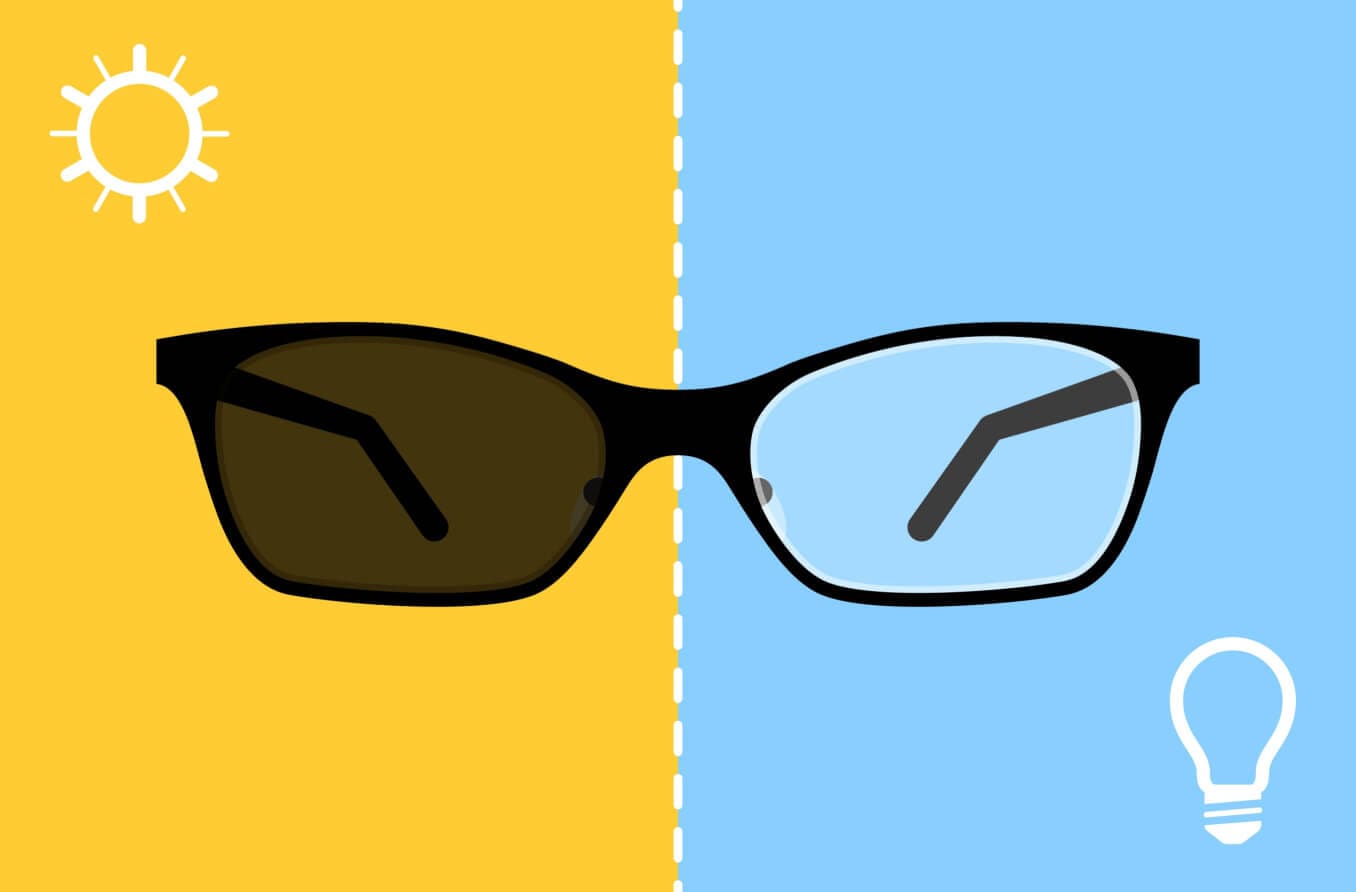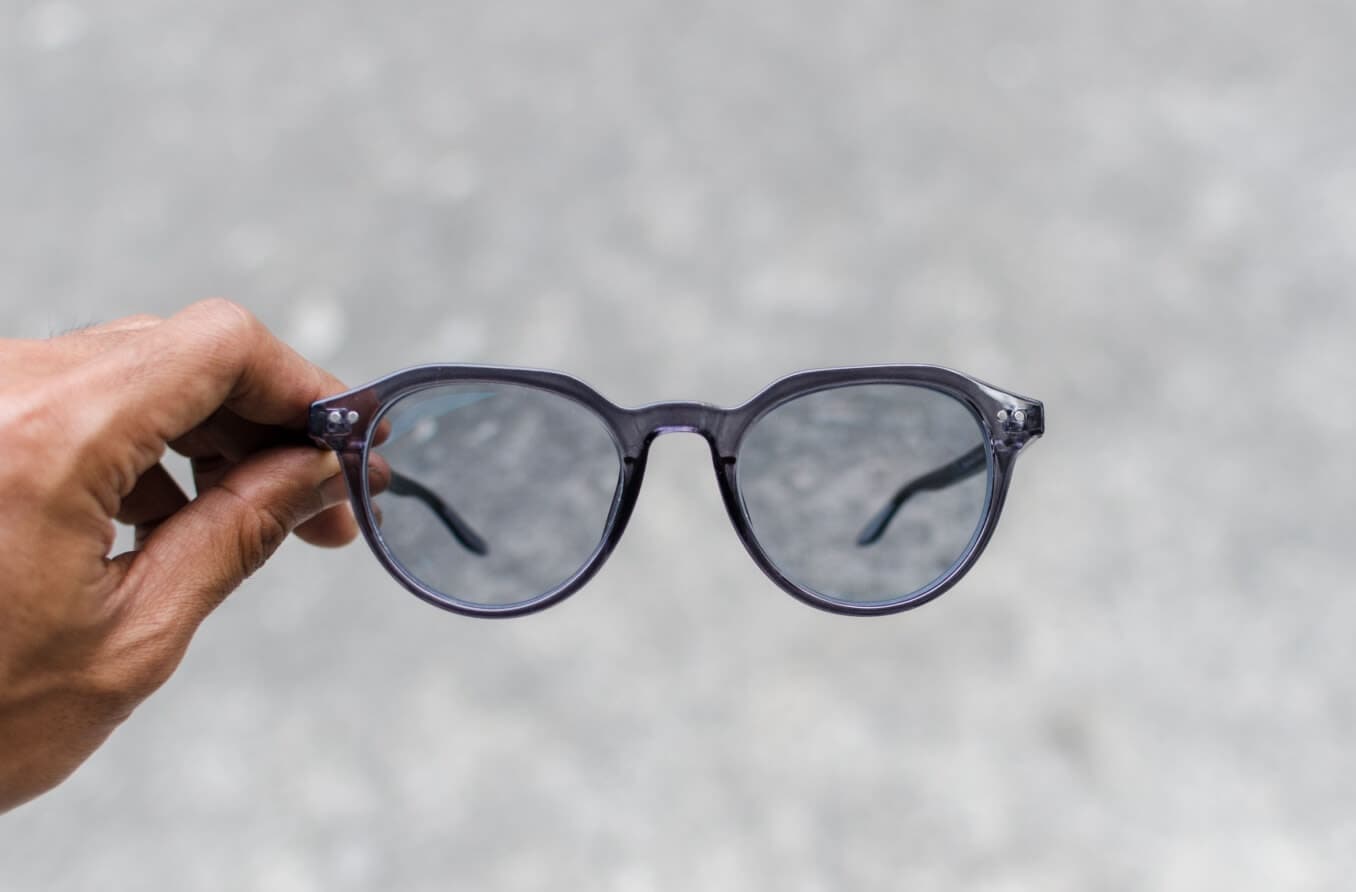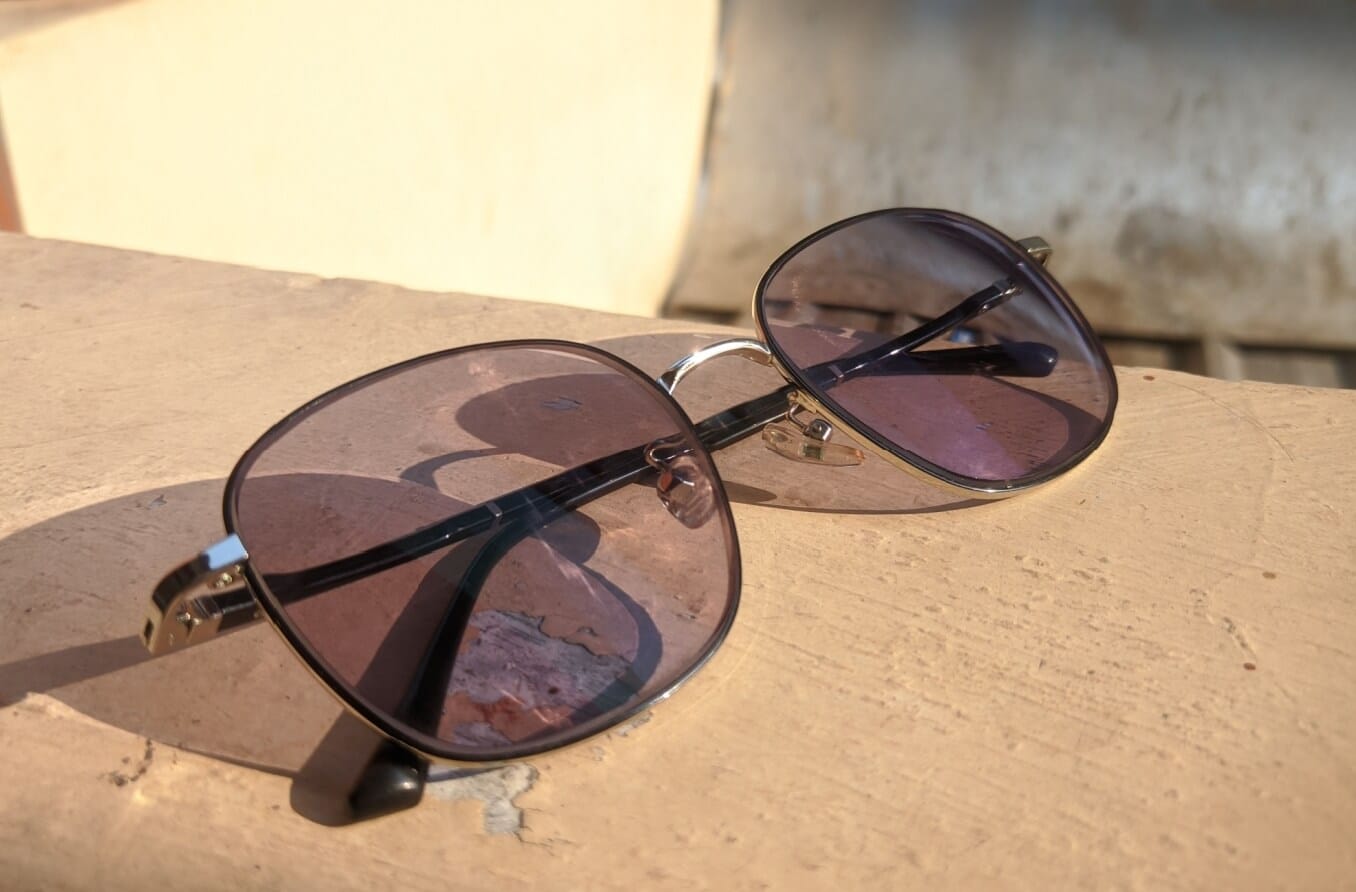If you’re considering photochromic lenses, you should know how they work, how to test them and how to find the best ones for you.
Here are five things to know about photocrhomic lenses, those lenses that adjust to bright light outside and then turn clear when your return indoors:
1. How photochromic lenses work
The coating on photochromic lenses is made up of trillions of tiny molecules of silver halide and chloride, which react to the ultraviolet (UV) radiation in sunlight.
Once exposed, the molecules in photochromic lenses change structure and move, working to darken, absorb the light and protect your eyes from the sun's damaging rays.
2. How to test photochromic lenses
Eye doctors don’t typically have photochromic lenses for you to test in their offices.
In rare cases, you may be able to test a pair of photochromic lenses; however, you won’t be permitted to leave the store with them, which means you won’t have a chance to test them in direct sunlight before purchasing them.
So how can you see how photochromic lenses adjust to bright and dim light? Look through a friend's photochromic glasses.
Another way to do your research about photochromic lenses? Check the online reviews for the brand of photochromic lenses you are considering.
SEE RELATED: What are photochromic sunglasses?
3. The difference between photochromic lenses and transition lenses
Photochromic lenses are often called "transition" lenses or "transitions" lenses because they transition from light indoors to outdoors and vice versa.
Transitions with a capital T is the best-known brand of photochromic lenses, but there are many other brands, including Sensity, LifeRx and PhotoFusion.
Calling photochromic lenses "transitions" lenses is like calling any facial tissue a Kleenex even though you could actually be referring to Puffs.
SEE RELATED: Transitions Gen 8 lenses launch with faster fade back
4. Photochromic lenses help improve your driving
Photochromic lenses make driving safer and easier. When you’re operating your car, truck or SUV, it’s important that your vision is clear and uncompromised.
If you have a visual impairment such as myopia, hyperopia or astigmatism, you’ll need corrective lenses to drive. Even then, harsh sunlight can hinder your vision and driving capabilities as you grab and switch to a separate pair of sunglasses.
With photochromic lenses, you get vision correction along with protection from the sun's dangerous UV rays all in one pair of glasses.
Photochromic lenses won’t help with night driving. Photochromic lenses only darken under the sun’s UV rays, so they won’t dim bright headlights or streetlights.
SEE RELATED: Photochromic lenses and driving
5. How to decide which light-adaptive lenses are right for you
Which photochromic lenses are right for you?
A number of brands offer photochromic lenses for glasses, and now there’s even an option for light-adaptive contact lenses. How can you get the best transition lenses for your needs? Start by thinking about your everyday activities and lifestyle.
If you’re most concerned about having sun protection when you drive, ask your eye care provider about photochromic lenses that will darken behind a windshield, such as Transitions Drivewear.
If you’re outdoorsy, you might consider photochromic contacts or glasses lenses with more durable frames and impact-resistant lens materials such as polycarbonate.
If you work at a computer all day, you’ll want the blue light filtering offered by all photochromic lenses (just don’t expect them to go dark when you look at a screen).
BOTTOM LINE: Ask your eye care provider which brands have the best “transition” (fade-back) time. You may also consider adding an anti-reflective coating for additional help filtering blue light.
READY TO SHOP FOR PHOTOCHROMIC LENSES? Ask your eye doctor whether light-adaptive glasses or contact lenses are right for you.


